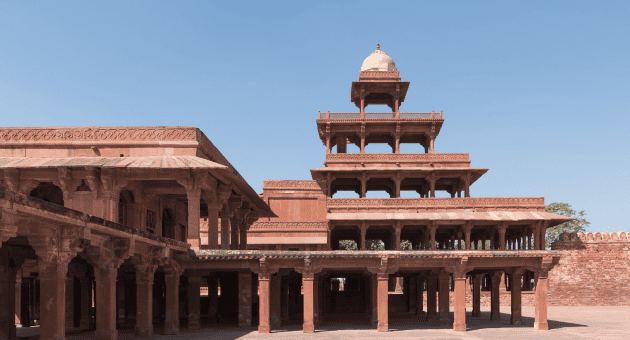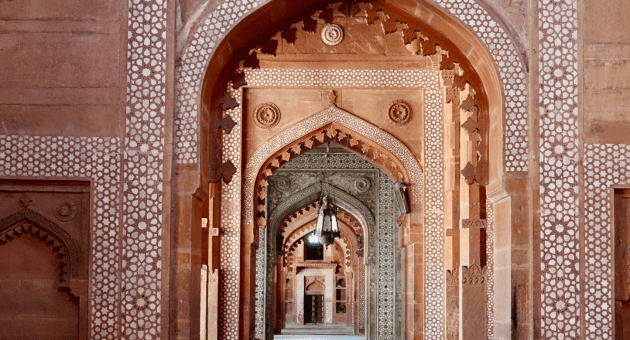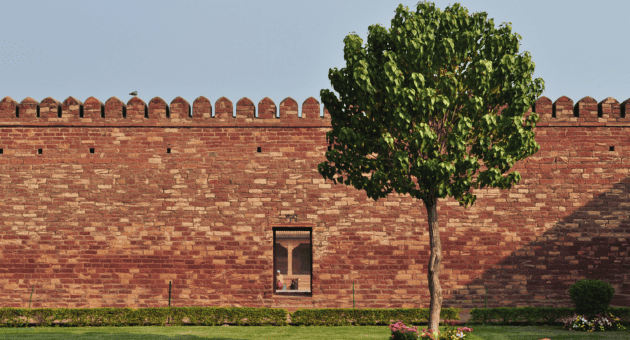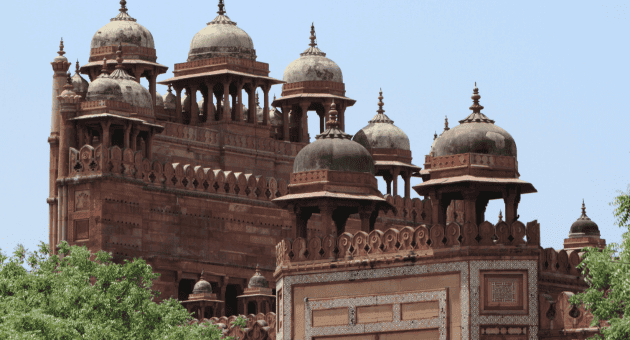Fatehpur Sikri is a stunning city located in the northern state of Uttar Pradesh, India. Built in the Mughal period, it has remained one of the most treasured historical sites of India. The city was founded in the sixteenth century, and to this day, it has retained its architectural grandeur. Fatehpur Sikri was declared a UNESCO World Heritage Site in 1986 and continues to be a popular tourist destination for people from all over the world. Let’s delve into the history, architecture, cultural significance, and visiting tips of this timeless Mughal city.
The History of Fatehpur Sikri

Fatehpur Sikri was founded by Mughal emperor Akbar the Great in 1571. Akbar was known for his significant contributions to the arts, culture, and architecture of India. He had a vision of creating a new capital for his empire that would be as grand as Delhi. Fatehpur Sikri was chosen to serve as the new capital and was projected as a symbol of his power and military might.
The Founding of the City
It took fourteen years for the construction of Fatehpur Sikri to be completed. The city was built in the Persian architectural style, fused with an indigenous Indian style. The city was built to accommodate every need of the Mughal royal court, including markets, palaces, pavilions, harems, stables, and mosques.
Emperor Akbar and His Vision
Akbar the Great was known for his religious tolerance, and he made Fatehpur Sikri a secular city. Akbar had a court of many religions- Hindus, Muslims, Jains, and Christians. He appointed a religious minister, Abul Fazl, who wrote the famous Akbarnama, a history of the Mughal empire during Akbar’s reign. The book lauded Akbar for his secular policies and religious tolerance.
The Decline and Abandonment of Fatehpur Sikri
Fatehpur Sikri was abandoned by Akbar after only fifteen years for unknown reasons. Historians speculate that reasons such as a shortage of water or military issues could have led to the abandonment. The city gradually fell into disrepair, and many of the palaces and pavilions were destroyed by the elements.
Architectural Marvels of Fatehpur Sikri

Fatehpur Sikri houses some of the most magnificent and breathtaking examples of Mughal architecture in India. Let’s explore some of the notable structures in the city.
The Buland Darwaza: Gateway to the City
The Buland Darwaza is a massive gateway located in Fatehpur Sikri. Akbar built it to commemorate his victory over Gujarat. The gate is 54 meters high and is made of red sandstone and white marble. The Buland Darwaza is adorned with intricate carvings and calligraphy, making it a sight to behold.
The Jama Masjid: A Stunning Mosque
Jama Masjid is a breathtaking mosque located in Fatehpur Sikri. The mosque was commissioned by Akbar after the birth of his son, Jehangir. The Jama Masjid has a stunning courtyard, making it one of the most peaceful places in the city. It is also one of the largest mosques in India, making it an architectural marvel.
The Panch Mahal: A Unique Palace
The Panch Mahal is a five-story palace located in Fatehpur Sikri. The palace was commissioned by Akbar and is a unique structure in the city. Each story of the palace is smaller than the one below, making it look like a pyramid. The Panch Mahal was used to entertain royalty and high-ranking officials.
The Diwan-i-Khas: Hall of Private Audiences
The Diwan-i-Khas was a hall used for private audiences by Akbar. The hall was built in Fatehpur Sikri and is a beautiful example of Mughal architecture. The hall is made of red sandstone and white marble and is decorated with intricate carvings and calligraphy.
The Tomb of Salim Chishti: A Sacred Shrine
The Tomb of Salim Chishti is a sacred shrine located in Fatehpur Sikri. It is a beautiful example of Mughal architecture and is decorated with marble and mother-of-pearl. The tomb is a popular pilgrimage site for people from all over the world.
The Cultural Significance of Fatehpur Sikri

Fatehpur Sikri has a rich cultural and historical significance in India. Let’s take a look at how it blends Hindu and Islamic architectural styles, its role in Mughal history, and its influence on modern Indian architecture.
A Blend of Hindu and Islamic Architectural Styles
Fatehpur Sikri’s buildings were constructed with a unique blend of Indian and Persian architectural styles. The use of red sandstone and white marble reflects a fusion of Hindu and Islamic architectural styles.
The Role of Fatehpur Sikri in Mughal History
Fatehpur Sikri was the capital of the Mughal empire under Akbar the Great. The city served as a symbol of his power and military might and was used as a residence for the royal court. It was also used for religious purposes, as it housed several mosques and a shrine, including the famous Tomb of Salim Chishti.
The Influence of Fatehpur Sikri on Modern Indian Architecture
Fatehpur Sikri has had a significant influence on modern Indian architecture. Many architects draw inspiration from the unique blend of Hindu and Islamic styles used in the city’s buildings.
Visiting Fatehpur Sikri Today
Visiting Fatehpur Sikri is a must-do for anyone who appreciates history and architecture. Here are some tips to make your visit enjoyable.
How to Reach Fatehpur Sikri
Fatehpur Sikri is easily accessible by road, rail, and air. The nearest airports are Delhi and Agra, and the closest railway station is Fatehpur Sikri Railway Station, which is well-connected to other cities.
Best Time to Visit
The best time to visit Fatehpur Sikri is between November and March when the weather is pleasant. During the summer months, temperatures can soar, making it difficult to explore the city.
Tips for Exploring the City

It’s best to spend a full day exploring Fatehpur Sikri as the city houses several buildings and monuments. It’s also a good idea to hire a guide who can give you a comprehensive tour of the city. The roads in Fatehpur Sikri are rough, so comfortable walking shoes are a must. Additionally, women must dress modestly, covering their heads and shoulders when entering religious sites.
Nearby Attractions Worth Visiting
There are several nearby attractions worth visiting when in Fatehpur Sikri. Some of the popular ones are Agra Fort, Taj Mahal, and Chand Baori.
Exploring Fatehpur Sikri is a breathtaking experience that should be on every traveller’s bucket list. Visitors can witness the beauty and grandeur of the Mughal empire and learn about its cultural and historical significance in India.


